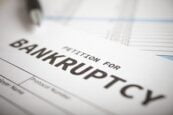I am confused about secured and unsecured creditors. What is the difference?
As a director of a company that is doing well and making money you may have no real understanding about the important differences between certain types of creditors. The only time it really comes up is if you apply for a loan for the business and the lender talks about security and the loan being secured etc.
Secured Creditors
A secured creditor is a creditor that has security over an asset or assets of the company. So, if the company can’t pay then they have the right to the proceeds of the sale or proceeds of the asset. This is enabled by a legal document called a charge or debenture. There are two kinds of charge; A Fixed Charge and a Floating Charge. The difference is quite hard to explain in a few words so we have a dedicated page on the differences. Have a read here on fixed and floating charges. A fixed charge is essentially a charge on a very specific asset whereas a floating charge is across a range of assets or asset that can change.
A charge is a bit like a mortgage on your house. If you fail to keep up your payments then the bank can effectively force the sale of the asset and reimburse themselves. In a company situation if the secured lender is owed money then they can “force” the company into the hands of administrators who will pay them having sold the assets. This description is simplistic and is more akin to the old system of receivership but it illustrates the principal.
Unsecured Creditors
These are essentially creditors that have no security over the assets. This can be a trade supplier, HMRC, a utility company. Banks will often lend without security but they will charge a higher rate of interest to offset the risk they can’t get their money back.
Be aware though that some creditors are called secured as they have a personal guarantee from the director and they may use terminology like “secured against the directors personal assets” In insolvency law they are not secured and so come after the secured creditors that have a “charge” over the company’s assets when money is paid over in the event of a terminal insolvency event like liquidation.
What about defacto secured creditors?
These are creditors that do not have any security over the company’s assets but they have control over the company in that they can shut it down. An example might be the creditor that runs their proprietory software, or their means of payment (this happens when Amazon have lent the company money to develop their online shop) such creditors are more properly referred to as “ransom creditors”. Ransom creditors are more important if the company is insolvent but could be rescued and so need to continue to trade. So they need to be kept happy!
In a liquidation scenario they would be behind a secured creditor that had a charge over the stock for example.
For a more detailed explanation of the priority of creditors in an insolvency situation then please look at our page on creditor priority. There is even a handy infographic on there too.






